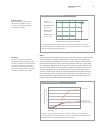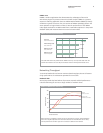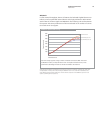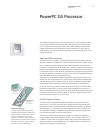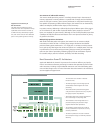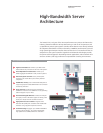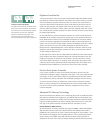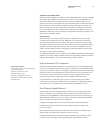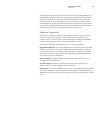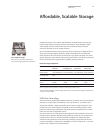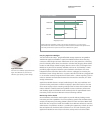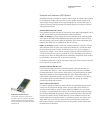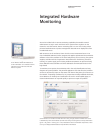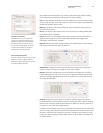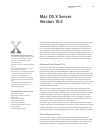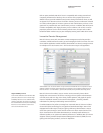
Dual Gigabit Ethernet ports deliver near-line-rate throughput of up to 980Mb/s per
port, alleviating bottlenecks even with very large files and expediting mail, web, file,
and printer sharing services. Together with the multihoming function in Mac OS X
Server, dual network ports enable Xserve G5 to serve more client systems; provide
redundant links; or support an isolated management network that is independent of
a client services network. Dual Gigabit Ethernet also enables the high-speed network
interconnect required by many computational cluster deployments.
Additional Connectivity
The Xserve G5 architecture uses the HyperTransport protocol to connect the I/O
controller to the system controller. The Serial ATA controller, optical drive, and
FireWire, USB 2.0, and serial ports are all integrated through a bidirectional 800MHz
HyperTransport interconnect for a maximum throughput of 1.6GB/s.
Xserve G5 offers industry-standard interfaces for connecting I/O devices:
• Dual FireWire 800 ports. Two FireWire 800 ports on the back panel and one FireWire
400 port on the front panel connect to high-bandwidth FireWire (IEEE 1394) devices,
such as storage devices and audio and video input devices. In addition, TCP/IP over
FireWire can be used to create small clusters, and FireWire Target Disk Mode allows
easy cloning of system configurations.
• DB-9 serial port. An industry-standard 9-pin serial port allows for system access
through a serial console session.
• Two USB 2.0 ports. USB ports on the back panel connect to keyboards, mice,
speakers, and other industry-standard peripheral devices.
• Optical drive. For software installation and recovery, a slot-loading 24x-speed CD-ROM
drive comes standard on server configurations. A Combo drive (DVD-ROM/CD-RW) is
available as an alternative for customers who need to read DVD data and back up data
on CDs.
16
Technology Overview
Xserve G5



